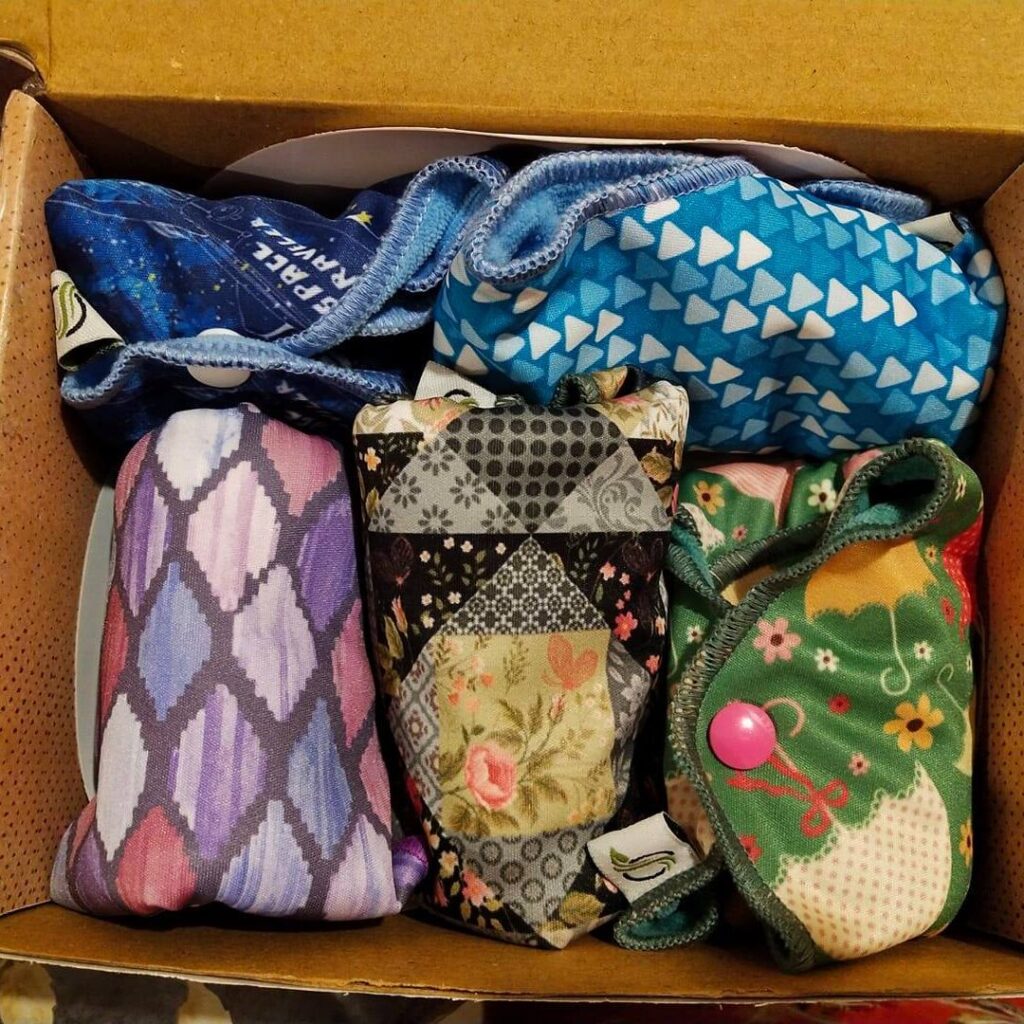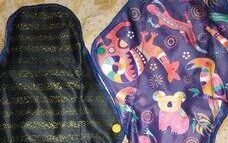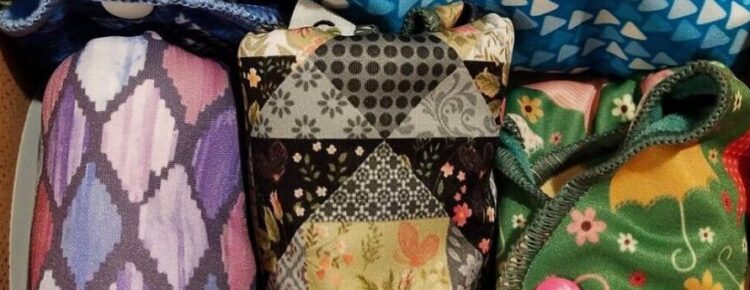Sustainable Menstruation refers to the practices where environment friendly alternatives and conventional menstrual products are used. Sustainable living is the practice of reducing our demand on natural resources by making sure that we replace non-sustainable, one time use products with reusable, sustainable products.
It started with my first delivery, Post delivery, I had bled for almost a month. I was quite irritated by the dryness and itching due to those plastic pads, in a week. That’s when I decided to look for an alternative and got only a couple of cloth pads, to my surprise it absorbed well also the cleaning was not gross, there was a bit of damp feeling though, not as uncomfortable as a plastic pad. Then I tried a few more brands and kept trying and testing until Bumpadum launched it’s cloth pads which is now known as Bhoomi.

I have used Disposable Sanitary Napkins(DSN) for a few years initially, after some time, switched to Cloths- pad folded, and used DSN only when I went out. Again I switched to Cloth pads, post first delivery i.e in August 2014. Cloth Pads are better than Disposable Sanitary Napkins- sharing some points through my experience.
ABSORBENT
My experience with Bumpadum Cloth Diapers was wonderful and my Cloth diapering journey was smooth because of it. But obvious reason to try cloth pads from same brand and they came as testers from very first set of sample in 2017. I tried them, the absorption was also wonderful, they are made of 5 layers of very absorbent organic cotton.
LEAK-PROOF
You don’t have to always be worried about leak and stain with Bhoomi pads, comes with wings that snaps together securely around your underwear and the lower most layer which is facing underwear is leakproof, that prevents messy leaks and stains when compared to DSN.
COMFORT
While cloth pads didn’t make me forget that I have my periods, they are certainly softer and more comfortable on my sensitive areas than DSN, because of velour cloth being the top layer, touching the skin. They prevent itching and rashes and do not have nauseating, artificial fragrances. I used to get rashes with DSN
HEALTH
Using DSNs exposes you and your most-sensitive parts to harmful plastics, artificial fragrances, chemicals, dioxins and bleach. Cloth pads on the other hand are made of natural fabric. Even the leak proof layer is kept away from contact with your skin.
SAVINGS
Disposables are a drain on your wallet month after month. Whereas, Cloth pads are reusable, lasts for about 3-5years if maintained well and save your money. I haven’t bought even a single DSN since 2014
ENVIRONMENT
DSN take a huge toll on our environment. They are not bio-degradable. They occupy landfills, clog sewers and waterways and when incinerated, releases harmful dioxins and other unpleasant, harmful chemicals into the air we breathe. Switching to cloth pads keeps waste away from our environment and helps us live better. I have saved 1400 plastic pads until now, from going into land fill and polluting our environment.
WASH CARE
You just have to soak the soiled pads in cold water for 20-30 mins and wash with detergent, agitate till clear water runs out and Sun dry them, best disinfectant. I have not washed them in machine, No need to use any disinfectant like Dettol or Savlon. I prefer to hand-wash them for my satisfaction.
STORAGE
I have traveled many times while using Cloth Pads, I keep Changing once in 5-6hrs and store them in Wetbags. wash them all together once I reach my destination by soaking them all in cold water for an hour. You can store them in a small bag with UGs post sun drying, once your cycle completes until next cycle.

Bhoomi Cloth pads are a modern twist on the age-old practice of using soft, gentle, washable and reusable cloth to absorb menstrual flow. Comes in vibrant colors and cute Prints. With convenience of wings that snaps together securely around underwear and a leakproof layer that prevents leaks. They are easy to wash, gentle on the skin and a great complement to menstrual cups for low-flow days or an alternative to cups for those women who are unable use them. This is for now, will come up with more on Sustainable Menstruation soon.
This blog post is part of the blog challenge ‘Blogaberry Dazzle’ hosted by Cindy D’Silva and Noor Anand Chawla and powered by Deyga.





Wow I have to admit I had no idea about cloth pads similar to cloth diapers. It’s a wonderful idea and I would love to try it out.
Thank you Noor
These are the very changes our earth needs. Very well written
These pads are eco-friendly and saves a lot of money, but I think washing will be a tedious task. I will sure visit to this website and gather more details.
I am all for sustainable living but cloth pads are not what It is a great way to save the environment. I would never use it. Anyway, I am out of this cycle and I wish the new generation all the best for trying to sustain our Earth.
Cloth pads were very difficult to maintained as I have used them when I was young. This may prove good. But washing them is very difficult.
At the same time we need to be sustainable too.
May bevcan try once but not sure
I am a big-time supporter of Sustainable living. I have never used cloth pads but I would love to switch. The Bhoomi cloth pad looks perfect.
Will pass on this message to female friends and family.
Though I have used cloth pads as a child when I just started my period, I have never tried any of the newer ones. Thanks for sharing this.
I’ve tried cloth pads but they weren’t able to handle heavy bleeding. I use them only at home. Let me try Bhoomi cloth pads and see.
I am not sure about the cloth pads and would definitely need to do more research before switching to it. Thank you for your honest review. I could relate to it since I have hyper allergic skin.
I never used cloth pads as I found them uncomfortable. I will try to use it but for me heavy flow and reduce the odour I need something very strong. No idea how these pads would work.
Back in our times, women did use cloth pads. Cloth pads are surely better for the environment. But not everyone is comfortable using it. The brand sounds good. Thanks for sharing your honest review.
Even I get rashes while using plastic pads so I switched to soft pads without the gel in between I have never tried cloth pads and I feel they might not be able to soak the heavy flow. However your experience and review has raised my confidence and will try this brand once.
Very useful post for those who wish to opt for a sustainable solution. Thank you for enlisting the benefits so beautifully.
This is one aspect of sustainability that had never crossed my mind. That’s an insightful post.
It’s really good for environment and for our skin as well. Using clothes pads is actually an age-old method that our grandmas would use. Let’s have a look to their website.
The reusable, cloth pads are good for personal health and the environment. Thanks for introducing us to the brand ‘Bhoomi’.
I am also getting irritate with itching of sanitory pads. Always wonder how this cloth pad works? Your detail post tempted me to give out one try. Specially I like the washing care. Thank you for such a informative post.
So well written post and much needed one as if not now then when we’ll think of our environment. These reusable pads are today much needed (just we need to be careful-hygenic way). So many benefits are there. Thanks for sharing this informative post.
I have been using Bumpadum reuseable pads for the past few years and they are truly the best, and so comfortable. Glad you wrote this, as it will help your readers make a sustainable choice.
These cloth pads are eco friendly and economical , so good 🙂
Few decades ago when napkins were not there women & girl were using old cotton clothes , so it’s something similar.